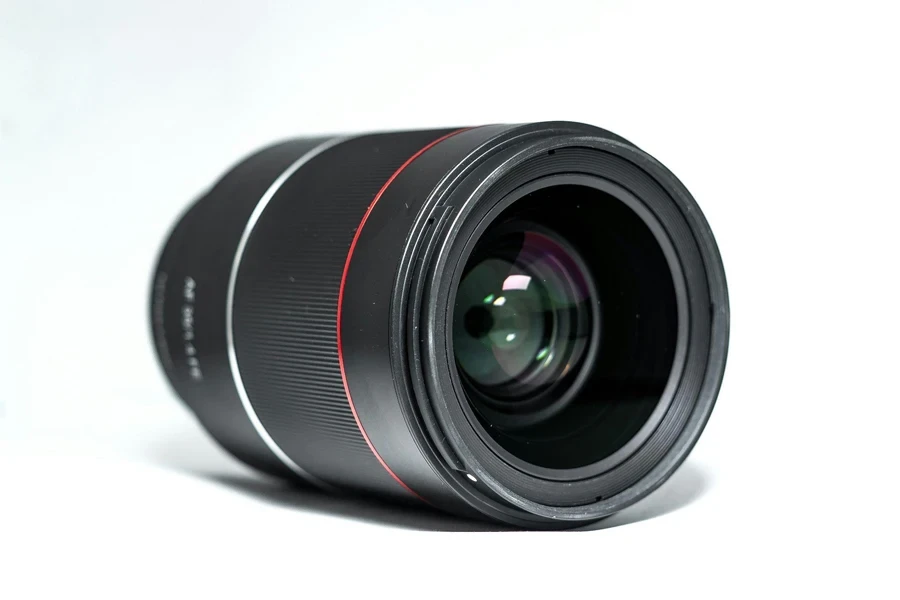Table of Contents
● Introduction
● Market overview
● Things to consider when selecting lenses
● Best products/models/types and their features
● Conclusion
Introduction
Choosing the right camera lens is crucial for professional photographers as it directly influences the quality and impact of their images. Different lenses offer varying focal lengths, apertures, and optical qualities, each shaping how subjects are captured, from vivid landscapes to detailed portraits. The choice of lens can also affect a photographer’s flexibility in different shooting environments, whether in a fast-paced sports event or a controlled studio setting. Moreover, investing in the right lens type enhances long-term versatility and usability, ensuring compatibility with evolving camera technologies. Therefore, understanding the lens market and selecting the appropriate lens are pivotal in achieving high-quality photographic outcomes and adapting to the dynamic nature of professional photography. The rapidly advancing technology within the camera lens market requires photographers to stay updated on new developments to leverage cutting-edge tools that can enhance their work, from augmented reality applications to complex image stabilization features.

Market overview
The camera lens market is poised for significant growth, expected to rise from USD 5.87 billion in 2024 to USD 8.02 billion by 2029, achieving a CAGR of 6.5%, as reported by Mordor Intelligence. This growth is driven largely by advancements in photographic technologies, particularly within the smartphone industry, where enhanced camera functionalities such as optical image stabilization and sophisticated autofocus systems are becoming key selling points. Major market players are spearheading these innovations, contributing to the competitive dynamics of the market. The integration of camera lenses into various applications, especially in automotive technology for autonomous vehicles and advanced driver-assistance systems (ADAS), further stimulates market expansion.
Additionally, data from GSMA indicates that smartphone adoption in the Asia-Pacific is projected to increase from 76% in 2022 to 94% by 2030. This rise underscores a growing consumer demand for high-quality camera phones, influencing market trends where photographic capabilities are a major factor in consumer electronics purchases. Technological advancements continue to enhance lens quality and functionality, reshaping consumer preferences towards more versatile and high-performing photographic tools, thus guiding the strategic decisions of mobile and traditional camera manufacturers in the global market.

Things to consider when selecting lenses
Optical quality and lens construction
The quality of the images produced by a camera lens is heavily influenced by its optical construction and the materials used. Elements like low-dispersion glass and aspherical lenses help in minimizing aberrations and enhancing image clarity and sharpness. Coatings on the lens elements also play a crucial role; anti-reflective coatings, for example, reduce lens flare and ghosting to produce clearer images. According to Zeiss, their T* coating is specifically engineered to enhance light transmission and reduce optical reflections. The physical build of the lens also affects its performance in various lighting and environmental conditions. Weather-sealed lenses offer an advantage in harsh weather conditions, ensuring durability and continued performance regardless of the external environment.
Lens compatibility
When choosing a lens, compatibility with existing camera bodies is fundamental. Each camera manufacturer typically has its own lens mount system, such as Canon’s EF and RF mounts, or Nikon’s F and Z mounts. This compatibility dictates which lenses can be used with which camera bodies, directly affecting the versatility of a photographer’s gear. Additionally, the usability of a lens in various shooting scenarios is crucial. Lenses that offer features like image stabilization and quiet autofocus motors, as highlighted by Canon, enhance usability in dynamic or video shooting scenarios where minimizing disruption and noise is key.
Value for money
Balancing cost with quality and performance is essential when selecting camera lenses. The price range for lenses can vary significantly based on factors such as aperture size, build quality, brand, and additional features like stabilization and weather sealing. Higher-end lenses generally offer better aperture and build quality, which can substantially enhance image quality, especially in low-light conditions. However, for those on a tighter budget, it’s important to evaluate which features are must-haves and which can be compromised. Entry-level and mid-range lenses often provide a good balance between cost and performance, suitable for both amateur and professional needs without the hefty price tag of high-end models.
By understanding these factors—optical quality, compatibility, and budget considerations—photographers can make informed decisions that align with their photographic needs and financial constraints, ensuring they invest in lenses that enhance their shooting capabilities while offering the best value for money.
Weight and size considerations
The weight and size of a lens can significantly impact a photographer’s experience, especially for those who travel frequently or shoot for extended periods. Larger, heavier lenses may offer superior optical quality but can be cumbersome during handheld shooting or when moving frequently across locations. On the other hand, compact lenses provide convenience and portability, which is particularly beneficial for street and travel photographers who prioritize mobility. When selecting a lens, it’s crucial to consider the trade-off between size, weight, and the optical performance to find a balance that suits any shooting style and physical comfort.
Future-proofing and technological adaptability
In a rapidly evolving digital landscape, considering how a lens will hold up against future technological advances is important. This includes thinking about how current lens choices will interface with next-generation camera bodies and imaging technologies. Lenses that support newer technologies, such as high-resolution sensors and advanced image stabilization, offer better long-term value. It’s also wise to consider the firmware support offered by manufacturers, ensuring that the lens can be updated to remain compatible with new camera features and capabilities. By selecting lenses that are adaptable and future-proof, photographers can protect their investment and continue producing high-quality images as photographic technology advances.

Some types of camera lenses
Top Wide-Angle Lenses
Wide-angle lenses are indispensable for photographers aiming to capture expansive landscapes, cityscapes, or interiors where including more of the scene is crucial. These lenses typically range from 14mm to 35mm and can dramatically affect the perception of depth and space in an image. They are highly regarded for their sharpness and built-in image stabilization, making them ideal for landscape and architectural photography. They offer superior performance in low-light conditions and minimal distortion, which is essential for photographers who require precision in their wide-angle shots. Additionally, wide-angle lenses are versatile, allowing photographers to achieve unique perspectives and dynamic compositions that are not possible with longer focal lengths.
Leading Telephoto Lenses
Telephoto lenses are essential for photographers looking to clearly capture distant subjects, such as in wildlife, sports, or event photography. These lenses generally start at 70mm and can extend to 200mm or more. Noted for their fast aperture and effective vibration reduction system, telephoto lenses allow for sharper images even at high zoom levels. This type of lens is particularly valued for its ability to maintain image quality across its zoom range, providing flexibility without sacrificing detail or clarity. Their reach and optical quality make them indispensable for capturing subjects that cannot be approached closely, offering clear images of distant actions.
Recommended Standard Lenses
Standard lenses, often referred to as ‘nifty fifties,’ are celebrated for their versatility. They typically have a focal length around 50mm, closely mimicking the human eye’s perspective, making them excellent for general photography, including portraits and everyday scenes. These lenses are popular for their affordability and exceptional performance, delivering sharpness and a pleasing background blur that enhances the focus on the subject, making them an excellent option for portrait photography. Their fast apertures allow for good performance in a variety of lighting conditions, making them a favorite choice for both amateur and professional photographers seeking quality and affordability in one package.
These lens choices highlight the diverse capabilities and specializations available in today’s market, catering to a wide array of photographic needs and styles. By understanding the key features and suitable uses for each type of lens, photographers can make more informed decisions that enhance their ability to capture compelling images.
Conclusion
When selecting a camera lens, key product features aligned with specific photographic needs should be prioritized. Factors such as optical quality, which includes considerations of sharpness and distortion control, compatibility to ensure seamless integration with the camera body, and budget considerations to balance cost with desired features are essential. Advanced lenses often offer superior low-light performance and enhanced durability, crucial for challenging shooting conditions. Staying abreast of the latest trends and innovations in camera technology is crucial. Advancements such as enhanced optical stabilization and faster autofocus significantly elevate photography. Understanding the unique benefits of different lens types enables informed decision-making that enhances photographic capabilities and ensures equipment remains up to date. This proactive approach ensures full potential utilization of camera systems, maintaining a cutting edge in photographic technology. As the industry evolves, features like AI-driven focus and computational photography are becoming standards, further transforming the landscape. Such innovations not only refine the user’s experience but also push the boundaries of what cameras can achieve, making an up-to-date understanding of technology essential for capturing exceptional images.




